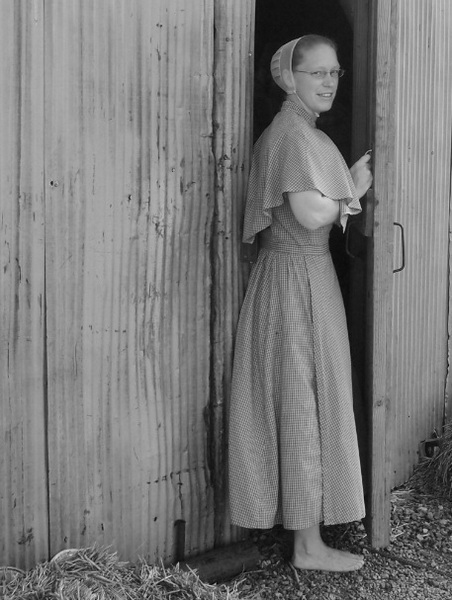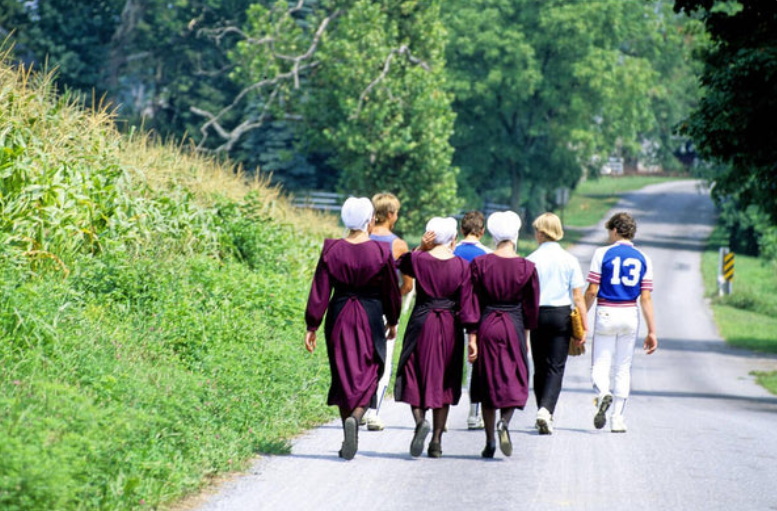Content Menu
● The Basics of Amish Footwear
>> Why Do Some Amish Women Go Barefoot?
● The Dress Code for Amish Women
● The Spiritual Aspect of Going Barefoot
● The Role of Men in Footwear Choices
>> Differences in Footwear Practices
● Common Misconceptions
● Daily Life Without Shoes
● The Evolution of Footwear Practices
● The Impact of Modern Influences
● Footwear Choices Across Different Amish Communities
● Conclusion
● FAQ
>> 1. Do all Amish women go barefoot?
>> 2. Are there any health concerns related to going barefoot?
>> 3. Do Amish children also go barefoot?
>> 4. How do weather conditions affect footwear choices?
>> 5. Is there any specific occasion when Amish women must wear shoes?
The question of whether Amish women wear shoes opens a window into the unique cultural practices, beliefs, and lifestyle of the Amish community. This article explores the intricacies of footwear among Amish women, examining their choices, the cultural significance behind them, and how these practices reflect their values of simplicity and humility.

The Basics of Amish Footwear
Amish women do wear shoes, but their footwear choices are often influenced by cultural norms and practical considerations. Typically, when they do wear shoes, they are black and paired with black stockings. However, it is common to see Amish women going barefoot, particularly while engaged in daily activities around their homes or farms.
Why Do Some Amish Women Go Barefoot?
1. Cultural Significance: Going barefoot is often viewed as a symbol of humility and simplicity. It reflects a rejection of materialism and a commitment to a lifestyle that prioritizes spiritual over worldly concerns.
2. Practicality: In many cases, being barefoot allows for better mobility in agricultural settings where heavy footwear can be cumbersome. It also helps them connect more closely with the earth, which is an important aspect of their agrarian lifestyle.
3. Cost-Effectiveness: With the rapid growth of children's feet, providing them with a constant supply of shoes can be impractical and costly. By going barefoot, families can save resources while still adhering to their values.
4. Connection to Tradition: Many Amish families have passed down the practice of going barefoot through generations. This tradition reinforces community bonds and shared values among members.
The Dress Code for Amish Women
Amish clothing is characterized by its simplicity and modesty. Women typically wear long dresses made from solid-colored fabrics, often accompanied by an apron and a bonnet. The absence of buttons and zippers in their clothing further emphasizes their commitment to modesty.
- Dresses: Long-sleeved dresses that fall below the knee are standard attire for Amish women. These dresses are often made from durable fabrics that can withstand daily wear.
- Head Coverings: Bonnets are worn to cover their hair, in accordance with religious teachings that emphasize modesty. The style and color of bonnets can vary among different Amish communities.
- Footwear: While black shoes are common for formal occasions or church services, many women prefer to go barefoot during everyday tasks.
The Spiritual Aspect of Going Barefoot
For many Amish women, going barefoot transcends mere practicality; it is a spiritual practice that fosters a deeper connection with nature and God. This practice is rooted in biblical principles that encourage humility and simplicity.
- Connection to Nature: Bare feet allow them to feel the earth beneath them, enhancing their bond with nature. This connection is vital in a community that places high value on agriculture and outdoor living.
- Symbol of Humility: By choosing not to wear shoes, they demonstrate their rejection of vanity and materialism. This choice aligns with their broader beliefs about living simply and focusing on spiritual rather than worldly possessions.
The Role of Men in Footwear Choices
While men in the Amish community are generally expected to wear shoes due to their manual labor roles, this creates a stark contrast with the footwear choices of women and children. Men typically wear sturdy work boots or formal shoes depending on the occasion.
Differences in Footwear Practices
| Aspect | Men | Women |
| Typical Footwear | Work boots or formal shoes | Black shoes or barefoot |
| Reasons for Wearing | Practicality for labor | Humility and connection to nature |
| Occasions for Shoes | Daily work or church | Special occasions or church |
Common Misconceptions
There are several misconceptions surrounding the practice of going barefoot among Amish women:
- Not a Religious Requirement: While deeply rooted in culture, going barefoot is not mandated by religious doctrine. It is more about personal choice influenced by community norms.
- Personal Choice: Many Amish women choose whether to wear shoes based on personal preference rather than strict community rules.
Daily Life Without Shoes
In daily life, it is common to see Amish women engaging in various activities without shoes:
- Gardening: Many prefer being barefoot while tending to gardens. This practice allows them to feel the soil and connect with the plants they nurture.
- Housework: Cleaning around the house often occurs without footwear. This not only provides comfort but also aids in moving quickly between tasks.
- Walking Outdoors: It's not unusual for children and adults alike to walk barefoot while running errands within their communities. This practice reflects a relaxed attitude towards daily chores.

The Evolution of Footwear Practices
Over time, individual preferences have led some Amish communities to adapt their practices regarding footwear. While traditional values remain strong, modern influences have introduced variations:
- Increased Use of Shoes: Some communities have begun incorporating more regular use of shoes for children during school or other public activities. This adaptation helps children integrate into broader society while still respecting their cultural roots.
- Adaptation to Weather Conditions: In colder climates or during winter months, wearing shoes becomes more practical for both men and women. Many families invest in sturdy winter boots that provide warmth without compromising on style or tradition.
The Impact of Modern Influences
As society evolves, so do the practices within Amish communities regarding footwear:
- Exposure to Outside Culture: Increased interaction with non-Amish communities has led some individuals to reconsider traditional practices around footwear. This exposure can lead to changes in how they view practicality versus tradition.
- Commercial Availability: The availability of affordable footwear options has made it easier for families to purchase shoes when necessary without straying too far from their core values.
- Social Events: During social gatherings or events outside their community, such as fairs or markets, wearing shoes becomes more common as a way to fit in with outsiders while still maintaining modesty through conservative styles.
Footwear Choices Across Different Amish Communities
It's important to note that not all Amish communities are homogenous; there are variations based on regional differences:
- Old Order Amish: Generally adhere strictly to traditional practices including minimal use of footwear.
- Beachy Amish: More progressive groups may allow for greater flexibility regarding clothing and footwear choices.
- Swartzentruber Amish: Known for their strict adherence to traditional customs including limited use of modern conveniences like shoes during daily life.
Conclusion
The question "Do Amish women wear shoes?" reveals much about the cultural identity of the Amish community. While they do wear shoes on certain occasions, many choose to go barefoot as an expression of humility and connection to nature. This practice reflects broader themes within Amish culture—simplicity, modesty, and a deep-rooted spirituality that informs every aspect of their lives.
As we explore these traditions further, we gain insight into how such practices shape not only individual lives but also the community as a whole. The choice between wearing shoes or going barefoot is more than just a matter of comfort; it embodies centuries-old values that continue to guide the Amish way of life today.

FAQ
1. Do all Amish women go barefoot?
While many do choose to go barefoot for practical reasons or cultural beliefs, not all Amish women do so regularly. It largely depends on personal preference and specific activities.
2. Are there any health concerns related to going barefoot?
Amish communities emphasize foot care despite going barefoot frequently. They take measures to prevent injuries and maintain foot health through regular cleaning and care routines.
3. Do Amish children also go barefoot?
Yes, it is common for Amish children to go barefoot as well due to similar cultural beliefs about humility and practicality during playtime or while working on farms.
4. How do weather conditions affect footwear choices?
In colder weather or during special occasions like church services or weddings, both men and women typically wear appropriate footwear for warmth and formality.
5. Is there any specific occasion when Amish women must wear shoes?
Yes, formal events such as church services typically require wearing shoes as part of maintaining decorum within the community.

















